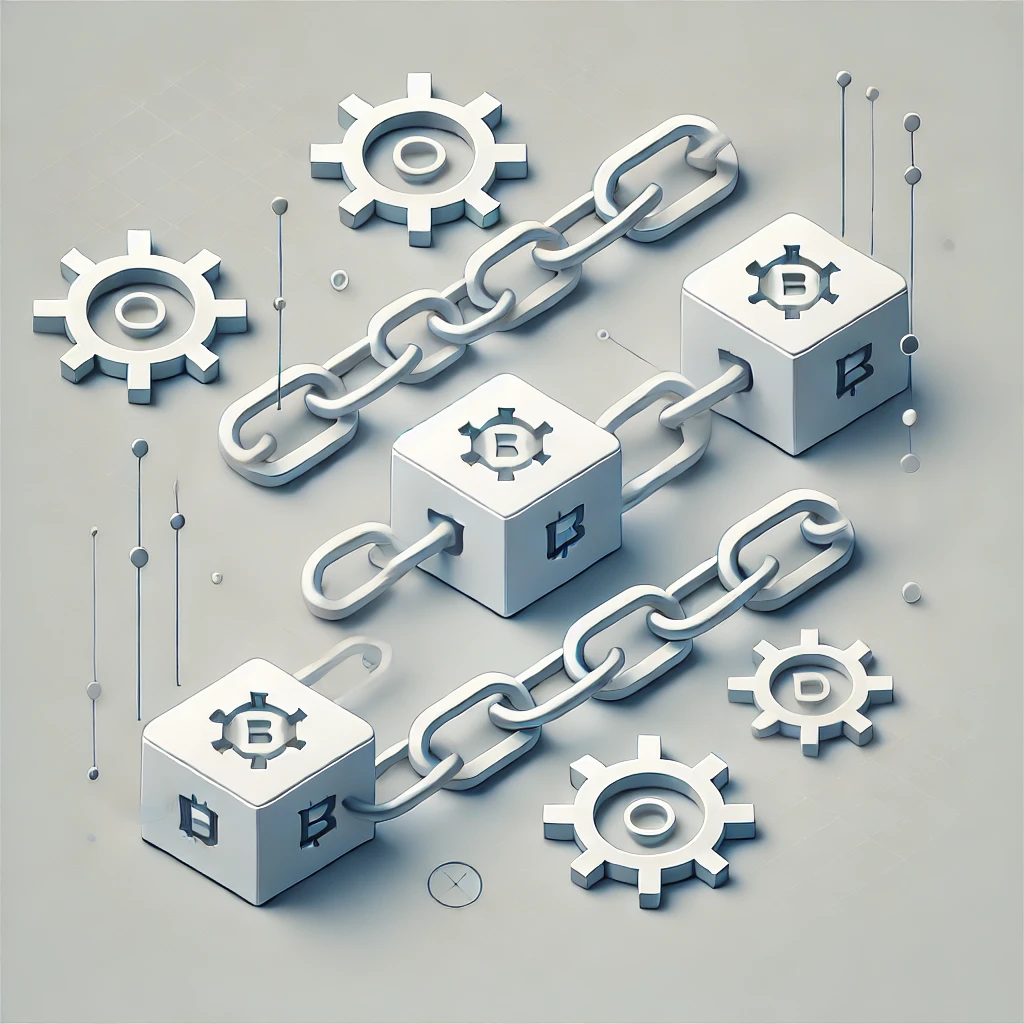Blockchain is the technology that powers most cryptocurrencies, but it’s much more than that. It’s a system that allows digital information to be recorded, shared, and verified in a secure and transparent way—without relying on a central authority. But how does it work exactly? Let’s break it down step-by-step.
1. The Building Blocks of Blockchain: What Is a Block?
At its core, a blockchain is made up of blocks of data. Each block contains three key pieces of information:
- Data: This could be details about a cryptocurrency transaction (like sender, receiver, and amount).
- Hash: A unique digital fingerprint for that block. Every block has its own hash, which is used to identify it.
- Previous Block’s Hash: This links each block to the one before it, forming a chain of blocks (hence the name blockchain).
2. Creating a Chain: How Blocks Are Linked
Every new block that is added to the blockchain contains the hash of the previous block, creating a chronological, connected chain of information. This link between blocks ensures that if someone tries to alter the data in one block, it will immediately break the chain because the hash of the altered block will no longer match. This makes blockchains tamper-resistant.
3. Decentralization: Who Controls the Blockchain?
Unlike traditional systems (like banks or servers), where a central authority controls everything, blockchains are decentralized. This means no single person or entity controls the network. Instead, blockchain networks are maintained by thousands (or even millions) of computers (called nodes) that work together to verify and record transactions. Each node has a complete copy of the blockchain, ensuring transparency and security.
4. Consensus Mechanisms: How Do Blockchains Stay Secure?
To maintain trust and security in a decentralized system, blockchains rely on consensus mechanisms to verify transactions and add new blocks to the chain. Two of the most common mechanisms are:
- Proof of Work (PoW): Used by Bitcoin, PoW requires miners to solve complex mathematical puzzles to validate transactions and add new blocks to the blockchain.
- Proof of Stake (PoS): Instead of relying on computing power, PoS allows people to validate transactions and create new blocks based on how much cryptocurrency they own and are willing to “stake” or lock up as collateral.
These mechanisms ensure that the blockchain remains secure and that everyone agrees on the state of the blockchain.
5. Transparency and Immutability: Why Trust Blockchain?
One of the key benefits of blockchain is that it’s transparent. Anyone can view the blockchain and see transactions happening in real-time. Once a block is added, it’s almost impossible to change. This immutability is crucial because it means that data on the blockchain can be trusted as accurate and unalterable.
6. Distributed Ledger: How Data is Shared
A blockchain acts as a distributed ledger, meaning every node on the network has a copy of all the data. When a new transaction is added to the blockchain, every node updates its copy. This decentralized nature ensures that there’s no single point of failure—if one node is compromised, the rest of the network remains unaffected.
7. How Does Blockchain Power Cryptocurrencies?
For cryptocurrencies like Bitcoin or Ethereum, the blockchain serves as a public ledger that records every transaction ever made. This ensures transparency and prevents fraud or double-spending (the same cryptocurrency being used twice). Every time you send or receive cryptocurrency, the transaction is verified and added to the blockchain by miners or validators.
8. Beyond Cryptocurrencies: Other Uses of Blockchain
While blockchain technology is best known for its role in cryptocurrencies, it has far-reaching potential. Some other areas where blockchain is being used include:
- Supply Chain Management: Blockchain helps track goods as they move through the supply chain, increasing transparency and reducing fraud.
- Voting Systems: Blockchain can provide secure and transparent voting systems where votes can be verified but not tampered with.
- Digital Identity: Blockchain technology can be used to create secure, decentralized identities that give users control over their personal information.
9. The Future of Blockchain
As blockchain technology evolves, new applications and improvements continue to emerge. One of the biggest challenges for blockchain right now is scalability—the ability to handle more transactions at a faster rate. However, new developments like Layer 2 solutions and sharding are helping to address this issue. As the technology matures, blockchain has the potential to revolutionize not just finance, but industries across the board.
10. Understanding the Risks
While blockchain offers many benefits, it’s important to be aware of some risks:
- 51% Attack: In theory, if someone gains control of more than 50% of a blockchain network’s computing power, they could manipulate the system.
- Regulation Uncertainty: Governments are still figuring out how to regulate blockchain and cryptocurrencies, which could affect their use and development.
- Environmental Concerns: The energy consumption required for certain consensus mechanisms (like Proof of Work) has raised concerns about blockchain’s environmental impact.
Conclusion
Blockchain is a powerful technology that underpins the world of cryptocurrency, but its potential goes far beyond digital currencies. It offers a new way of organizing data that is secure, transparent, and decentralized. As we continue to explore the possibilities, understanding the basics of blockchain will be key to navigating this new digital landscape.

